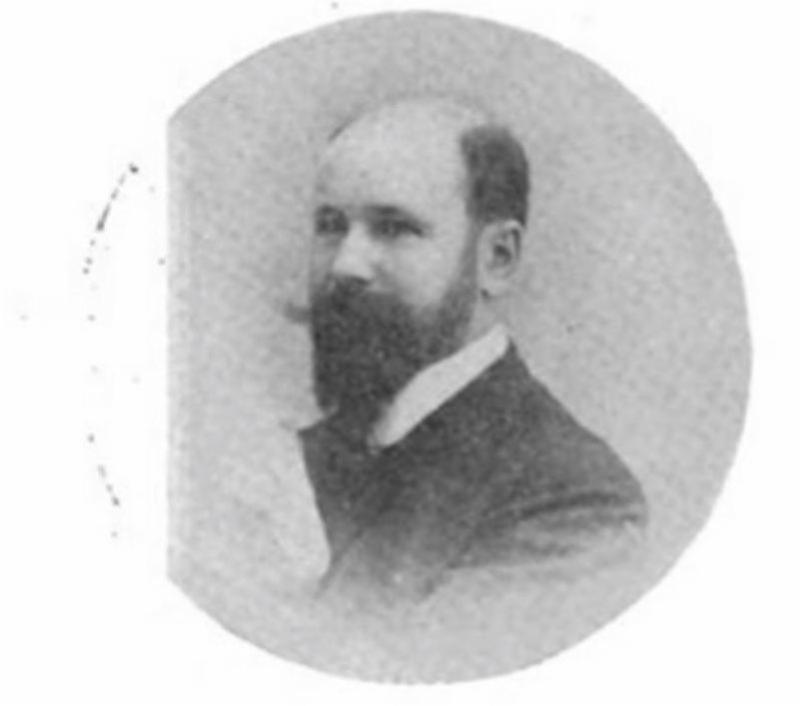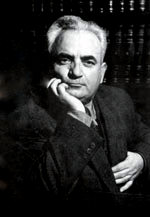Hamo Ohanjanian was a remarkable name in the history of the Armenian revolutionary movement, as well as the short-lived first independent Republic of Armenia, of which he was its third Prime Minister for six months.
His actual first name was Hamazasp. He was born in Akhalkalak on February 1, 1873, the date more generally accepted. He studied at the local school, and then graduated from the Russian school of Tiflis.
He entered the University of Moscow, where he studied medicine. However, due to his involvement with revolutionaries and his participation in student agitations, he was forbidden from continuing his studies and staying in Moscow, and he was forced to return to Tiflis. Her girlfriend from the student years, Olga Vavilevna, a Russian revolutionary, joined him. They married in 1897 and would have three children: two boys, Monik and Arik, and a daughter, Galia. Around this time, he entered the ranks of the Armenian Revolutionary Federation.
In 1899 Ohanjanian traveled to Switzerland and specialized in medicine at the University of Lausanne until 1902. Simultaneously, he continued his revolutionary activities, which did not end after his return to Tiflis. He became one of the leaders of the popular movement against the June 12, 1903 law of the imperial government that established the confiscation of the properties of the Armenian Church and one of the driving forces behind the “Caucasian Project” that was part of the turnaround of the A.R.F. to expand its activities into the Caucasus.
He participated in the third (Sofia, 1904) and fourth general assemblies (Vienna, 1907) of the ARF, and became a member of the Eastern Bureau of the organization. He played an important role in the maintenance of the internal discipline and ironclad structure of the organization, and also remained active during the wave of democratization that followed the Russian Revolution of 1905 and the Armeno-Tatar conflict spurred by the Czarist regime of Russia.
Ohanjanian was arrested by the imperial government in 1908 along with 200 party members and sympathizers as part of a strong attempt to weaken the A.R.F. He was jailed in the infamous prison of Metekh, in Tiflis, where he was often subjected to torture to confess the “sins” of the party. His powerful defense during the “A.R.F. trial” of 1912 did not avoid him a sentence of four years of forced labor, but raised his profile and prestige among both Armenians and Russians.
He was first sent to Kharkov, in Ukraine, and then to Siberia, and Rubina Areshian, the close collaborator of the late Kristapor Mikayelian, one of the ARF founders, went after him to follow his steps and make continuous efforts for his liberation. They would marry during those years.
After the beginning of World War I, the Russian government made a crucial turnaround and approached the ARF in order to launch the Armenian volunteer movement. Among many others, Hamo Ohanjanian was liberated and returned from Siberia directly to Tiflis. As a doctor, he was at the Russian-Turkish battlefront helping the Armenian soldiers, and in Van became the right hand of Aram Manoukian, who was the governor during the brief period of liberation following the self-defense of April-May 1915 against the Ottoman troops.
Ohanjanian participated actively in the battle of Gharakilise (May 1918), where his son Monik gave his life for the defense of the homeland. After the independence, he devoted himself to consolidate the grounds of the newly created republic. He had an active role in international relations as a member of the delegation of the Republic in Europe. He was elected member of the A.R.F. Bureau in 1919, after the ninth general assembly of the party held in Yerevan, and became Minister of Foreign Affairs in January 1920.
In May 1920, after the failure of the Bolshevik rebellion, the cabinet of Prime Minister Alexander Khatisian resigned, and the political acute crisis forced the A.R.F. Bureau to become government. From May –November 1920, in the period of the “Bureau-government,” Hamo Ohanjanian was both Prime Minister and Minister of Foreign Affairs. His son Viken (1920-2009) was born in this period.
After the Sovietization of Armenia in December 1920, Ohanjanian was arrested by the Soviet regime and imprisoned in Yerevan. The popular rebellion of February 1921 saved him and hundreds of prisoners from certain death, and after its end in early April, Ohanjanian went to Tabriz (Persia) via Zangezur. In 1923 he moved from Persia to Cairo, where he would live the rest of his life.
He was one of the founding members of the Hamazkayin Armenian Cultural and Educational Society in 1928 and president of the Society until his death. He had an important contribution to the foundation of the Armenian Lyceum (the Jemaran) in Beirut and its consolidation during its first decades. He was also re-elected member of the A.R.F. Bureau.
Hamo Ohanjanian passed away in Cairo on July 31, 1947. He was buried in the Egyptian capital. His tombstone was engraved with the following legend: “He lived in the way that he preached.”





